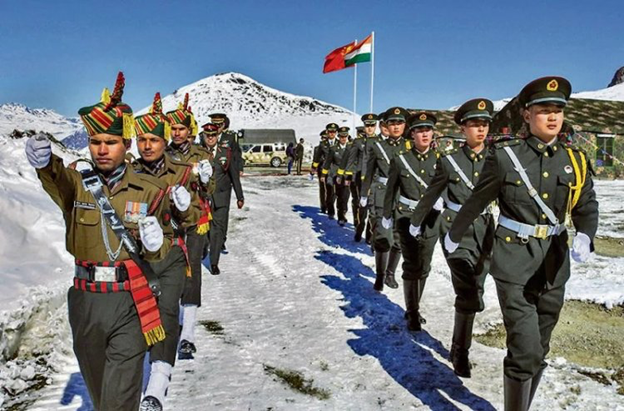Indo-China Disengagement at Hot Springs & Gogra Post
- Posted By
10Pointer
- Categories
World Affairs
- Published
10th Sep, 2022
-
Context
The Indian and Chinese troops have decided to disengage at Patrolling Pillar-15 (PP-15) in the Gogra-Hotspring region of Eastern Ladakh.

Key-highlights
- Indian and Chinese armies have begun to disengage from Patrolling Point-15 in the Gogra-Hotsprings area of Eastern Ladakh, marking a step forward to end the standoff ongoing since May 2020.
- PP-15 is one of the 65 patrolling points in Ladakh along the Line of Actual Control (LAC).
- The disengagement has begun in a coordinated and planned way, which is conducive to peace and tranquility in the border areas.
- As per the understanding reached earlier on disengagement, a buffer zone is to be created at the friction points once troops are withdrawn by both sides and new patrolling norms are to be worked out after complete disengagement and de-escalation.
- The consensus about the disengagement was reached in the 16th round of India China Corps Commander Level Meeting.
- The 16th round of talks was held on July 17, 2022, at the Chushul border personnel meeting point on the Indian side.
- Since the stand-off began in May 2020, the two sides have so far held 16 rounds of talks with disengagement undertaken from both sides of Pangong Tso.
- With disengagement at PP-15, forces of the two countries have disengaged at all friction points in the region which included the North and South banks of the Pangong Tso, PP-14, PP-15 and PP-17A.
- The last disengagement between the forces of the two countries had been achieved at PP-17 A in August 2021 following the 12th Corp Commander Level meeting.
- The friction points that remain now are Demchok and Depsang, which China has constantly refused to accept, maintaining that they are not a part of the current stand-off.
About Pangong Tso
- Pangong Tso is an endorheic saline lakespanning eastern Ladakh and West Tibet.
- It has a land-locked basinseparated from the Indus River basin by a small elevated ridge.
- It is 134 km long and divided into five sublakes, called Pangong Tso, Tso Nyak, Rum Tso (twin lakes) and Nyak Tso.
- The lake, a glacial melt, has mountain spurs of the Chang Chenmo range jutting down, referred to as fingers.
- Pangong Tso is in disputed territory. The Line of Actual Control passes through the lake.
- Approximately 50% of the length of the overall lake lies within Tibet China,40% in Ladakh India and the rest is disputed and is a de-facto buffer zone between India and China.
- An Inner Line Permit is required to visit the lake as it lies on the Sino-Indian Line of Actual Control.
|
About Hot Springs & Gogra Post
- Both of these are close to the Chang Chenmo river in the Galwan sub-sector of the LAC in eastern Ladakh.
- Chang Chenmo River or Changchenmo River is a tributary of the Shyok River, part of the Indus River system.
- It is at the southern edge of the disputed Aksai Chin region and north of the Pangong Lake basin.
- The source of Chang Chenmo is near the Lanak Pass.
- While Hot Springs is just north of the Chang Chenmo river, Gogra Post is east of the point where the river takes a hairpin bend coming southeast from Galwan Valley and turning southwest.
- The area is north of the Karakoram Range of mountains, which lies north of the Pangong Tso lake, and south east of Galwan Valley, which became a major flashpoint and a violent faceoff in June 2020 had left 20 Indian and at least four Chinese troops dead.
